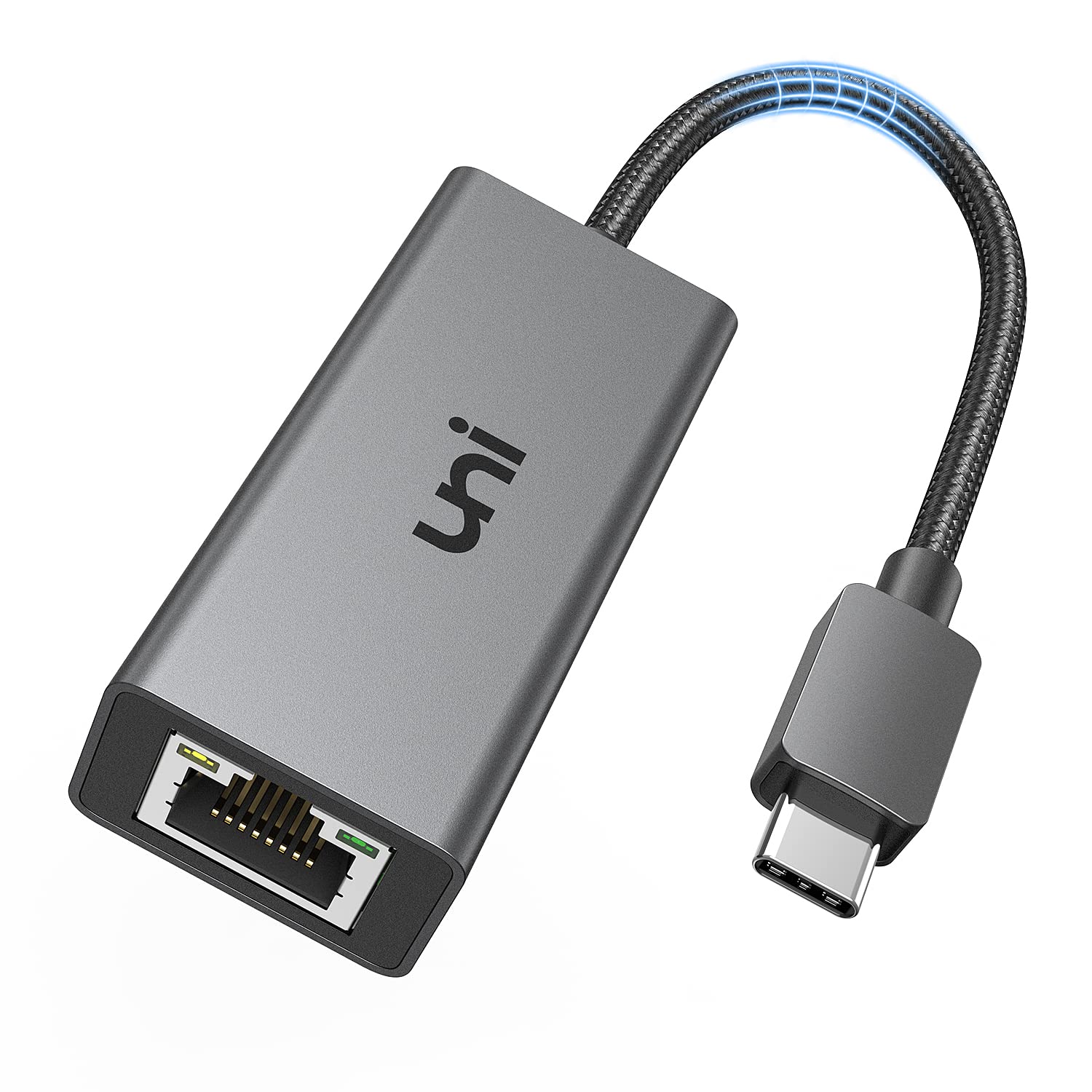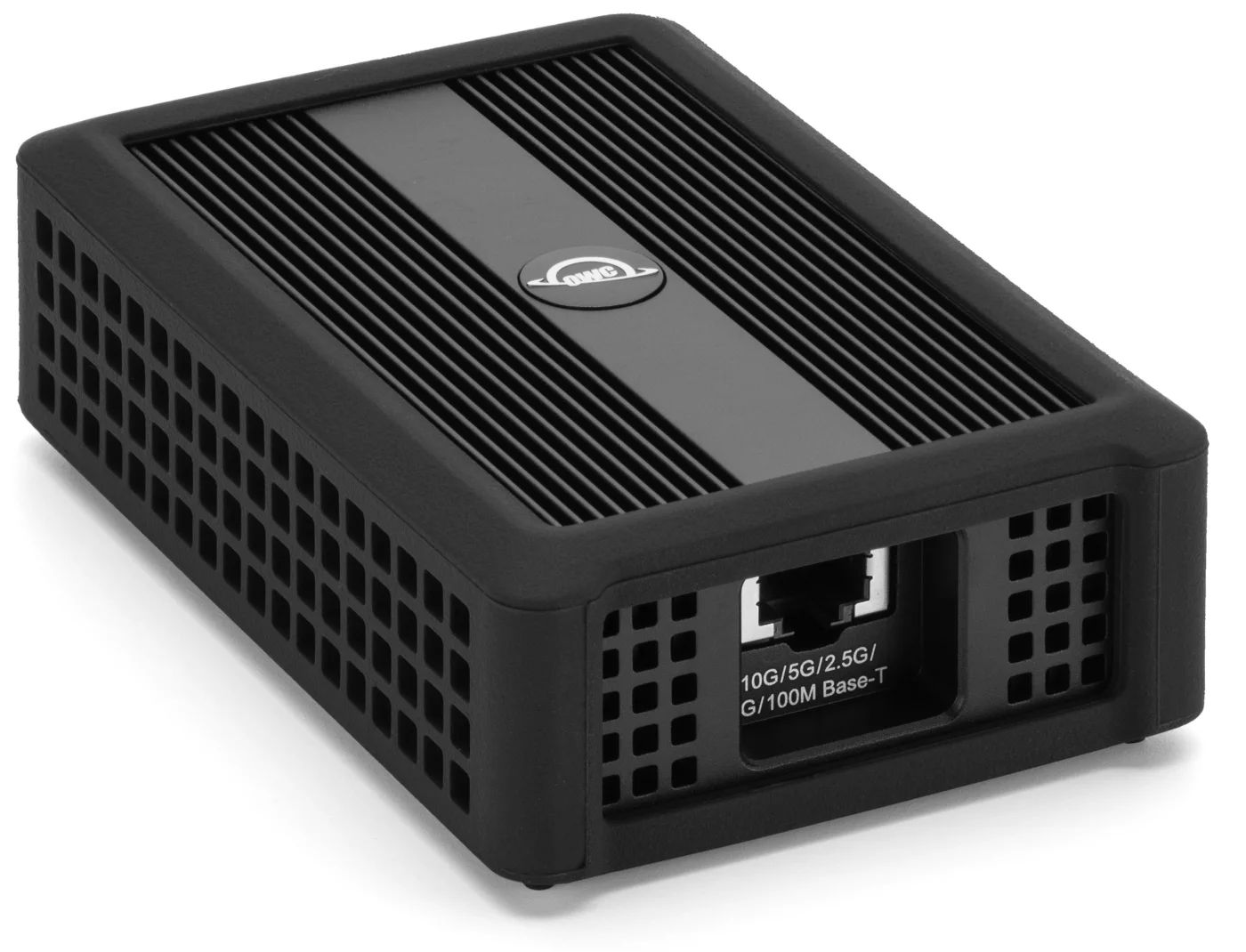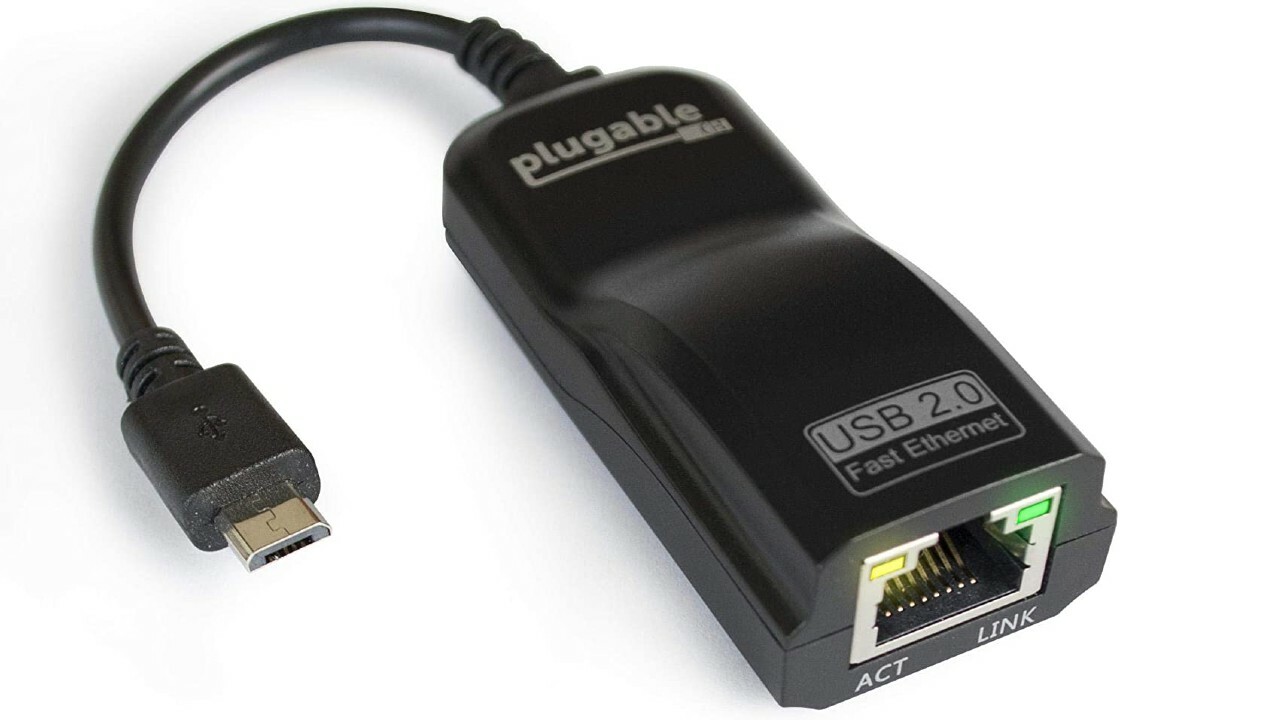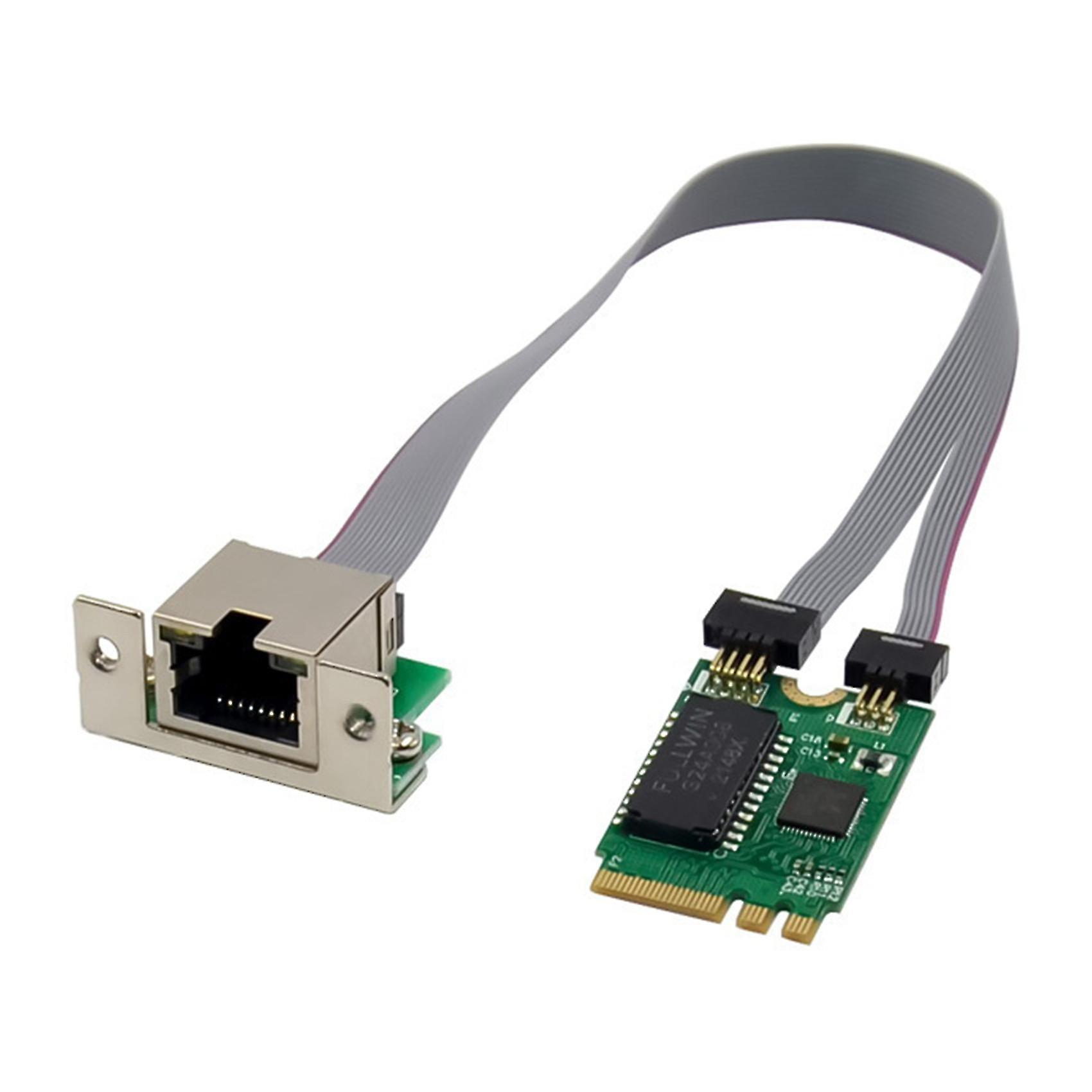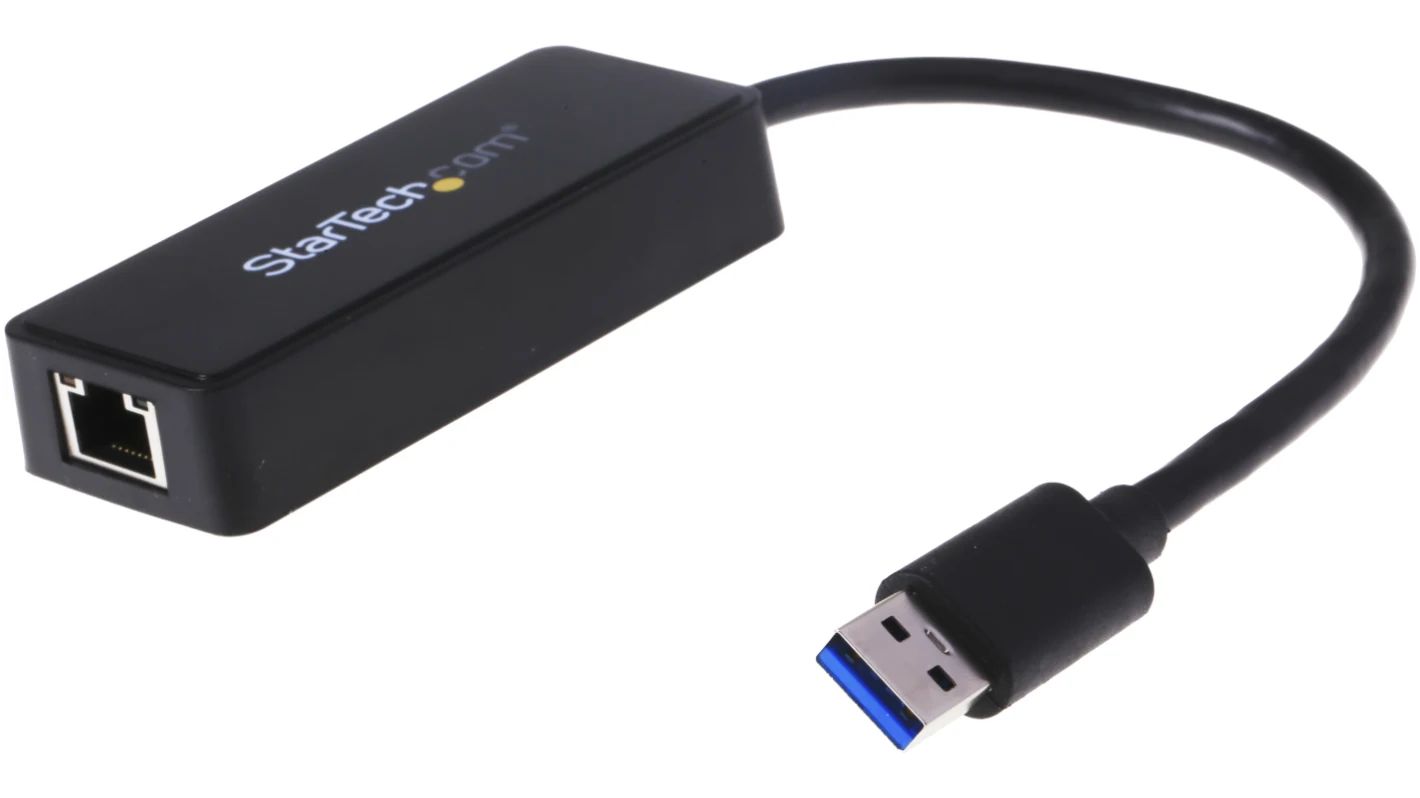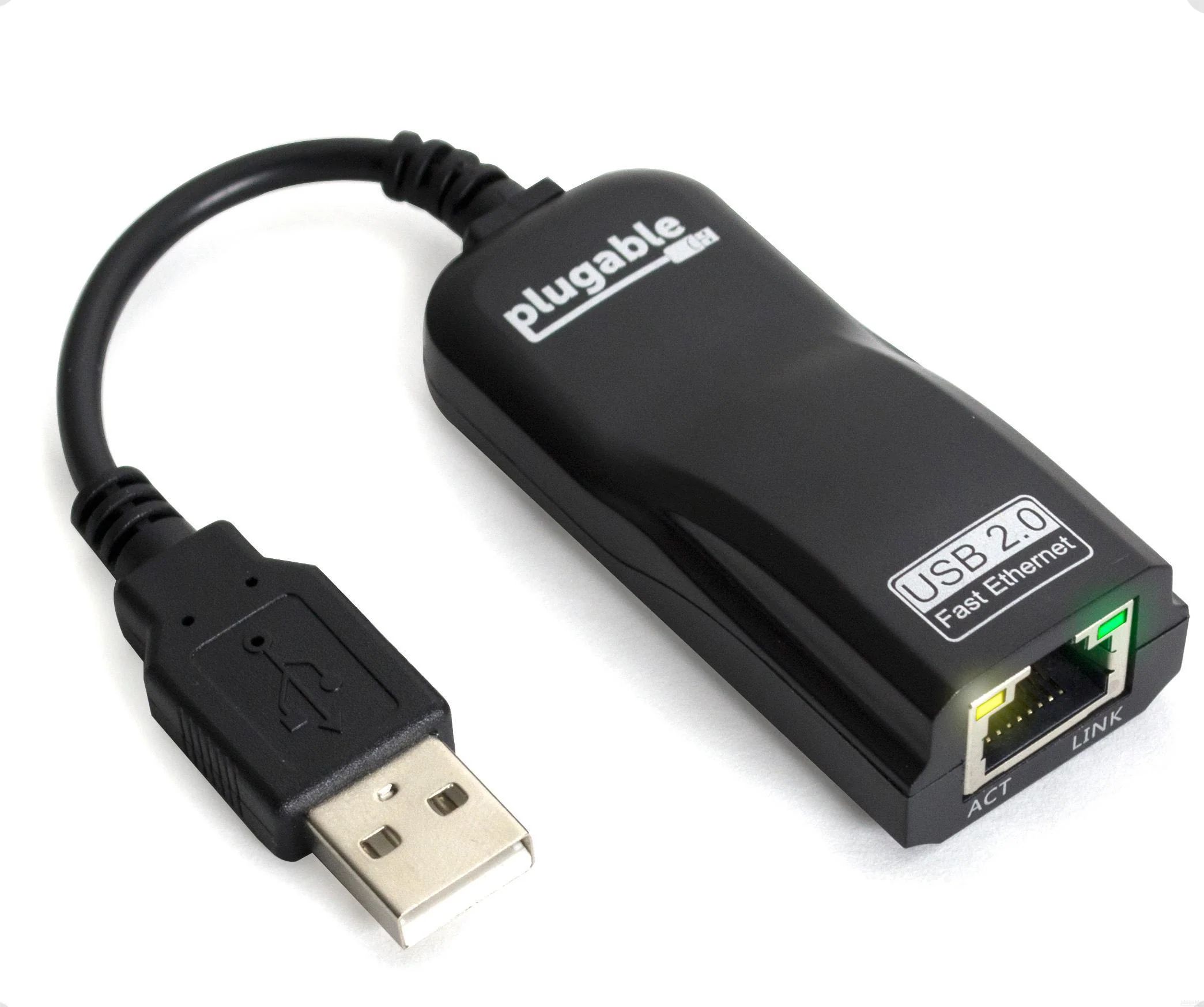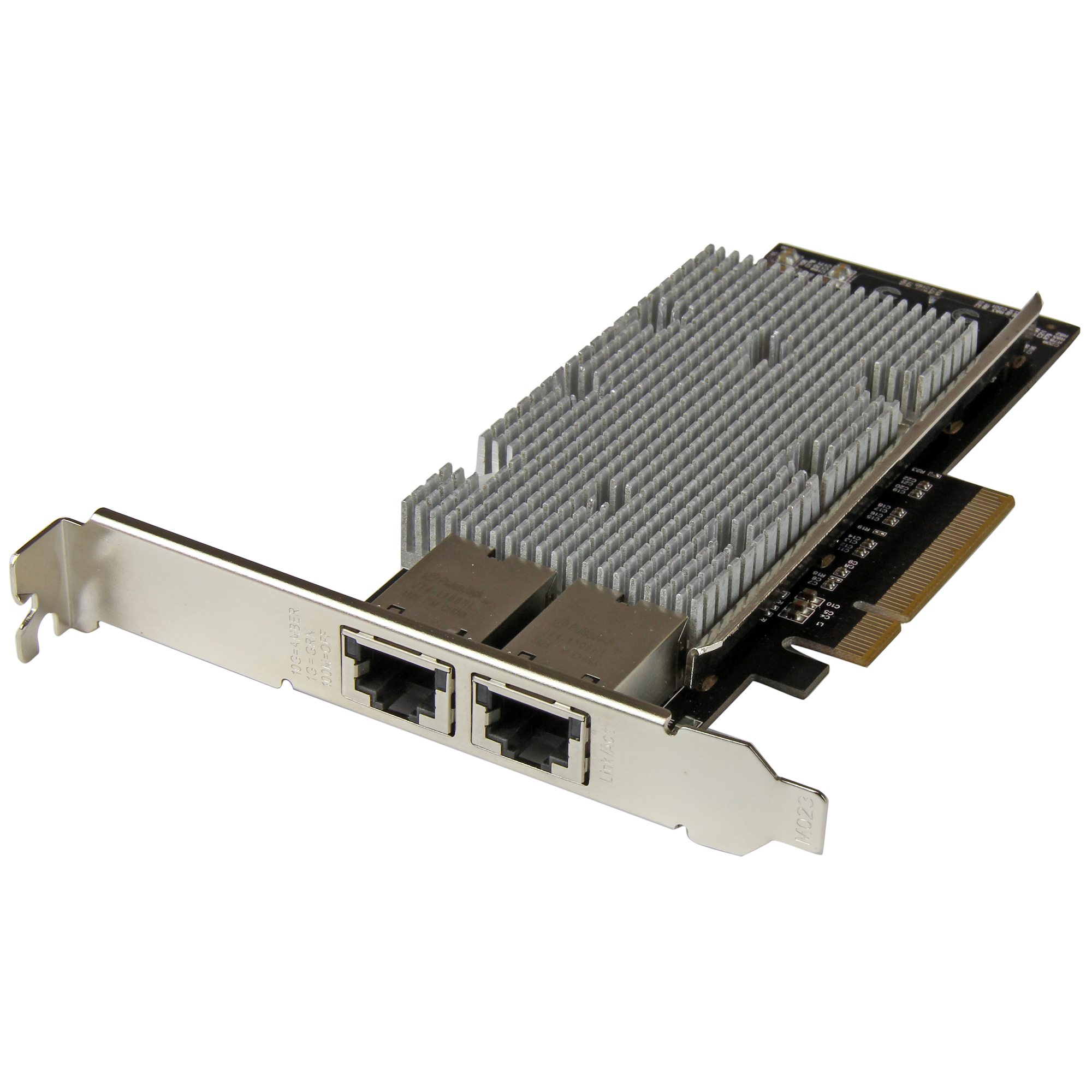Introduction
Gigabit Ethernet has become a vital component of modern networking, providing high-speed data transmission capabilities that are essential for businesses and individuals alike. With its ability to transfer data at incredible speeds, Gigabit Ethernet has revolutionized the way we connect and share information.
In this article, we will explore the concept of Gigabit Ethernet, its functionality, and its benefits. Furthermore, we will delve into how Gigabit Ethernet is integrated into Mac systems, guiding you on how to check if your Mac has Gigabit Ethernet and how to set it up for optimal performance. We will also address common troubleshooting issues that you may encounter along the way.
Whether you are a business professional who heavily relies on robust network connectivity or simply a tech enthusiast looking to harness the full potential of your Mac, understanding Gigabit Ethernet and its implications can greatly enhance your networking experience.
So, join us as we embark on this journey to uncover the world of Gigabit Ethernet and discover how it can skyrocket your network’s capability on your Mac.
What is Gigabit Ethernet?
Gigabit Ethernet, also known as 1000BASE-T or IEEE 802.3ab, is a type of Ethernet network technology that provides data transmission speeds of up to 1 gigabit per second (Gbps). It is an enhancement of the traditional Ethernet standard, offering significantly faster connectivity for local area networks (LANs).
At its core, Gigabit Ethernet is based on the same principles as Ethernet, including the use of twisted pair copper cabling and the Ethernet frame format. However, it introduces several improvements to increase data transfer rates, making it ideal for modern networking needs.
One of the key elements that sets Gigabit Ethernet apart is its higher signaling rate. While traditional Ethernet operates at 10 Mbps (megabits per second) and Fast Ethernet operates at 100 Mbps, Gigabit Ethernet provides speeds 10 times faster, reaching up to 1000 Mbps.
Another aspect that contributes to the increased speed of Gigabit Ethernet is its use of full-duplex communication. This means that data can be transmitted and received simultaneously, effectively doubling the potential transfer rate. Unlike half-duplex communication, where data is transmitted in one direction at a time, full-duplex allows for faster and more efficient data transfer.
Furthermore, Gigabit Ethernet utilizes a larger frame size compared to its predecessors. While Ethernet frames are typically limited to a maximum size of 1500 bytes, Gigabit Ethernet frames can be up to 9000 bytes in length. This extended frame size reduces the overhead associated with transmitting data, resulting in more efficient utilization of the available bandwidth.
By leveraging these improvements, Gigabit Ethernet enables faster file transfers, smoother streaming experiences, and enhanced network reliability. It caters to the growing demand for high-bandwidth applications, such as high-definition video streaming, online gaming, and data-intensive tasks conducted by businesses.
Now that we have a general understanding of what Gigabit Ethernet is and its key features, let’s delve deeper into how it works and the benefits it brings to network users.
How does Gigabit Ethernet work?
Gigabit Ethernet operates based on the same fundamental principles as traditional Ethernet, but with enhancements that enable faster data transmission speeds. It utilizes a combination of hardware and protocols to facilitate high-speed networking.
At the physical layer, Gigabit Ethernet utilizes twisted pair copper cabling to transmit data signals. This enables the use of existing Ethernet infrastructure without the need for expensive upgrades. The cabling is typically categorized as Cat 5e or higher, which offers improved bandwidth capabilities and reduces signal degradation.
To achieve gigabit speeds, Gigabit Ethernet utilizes a technique called encoding. It uses a technology called 8B/10B encoding, where 8 bits of data are encoded into 10-bit sequences to ensure reliable transmission. This encoding scheme allows for better error detection and correction, maximizing the integrity of the transmitted data.
Another crucial aspect of Gigabit Ethernet is the implementation of switches. Switches play a vital role in managing data traffic within a network. They enable efficient data transmission by creating dedicated paths between the sender and receiver, known as virtual circuits. These switches have multiple ports, each capable of supporting gigabit speeds, allowing for simultaneous high-speed communication between multiple devices on the network.
In addition to the physical layer, Gigabit Ethernet incorporates various protocols to ensure proper data transmission and reception. At the data link layer, it utilizes the Ethernet frame format, including the preamble, MAC addresses, and CRC (Cyclic Redundancy Check) for error checking. These protocols ensure the integrity and reliability of the transmitted data.
To facilitate communication between devices, Gigabit Ethernet utilizes the TCP/IP protocol suite. This suite includes protocols such as IP (Internet Protocol), ICMP (Internet Control Message Protocol), and TCP (Transmission Control Protocol), which enable devices to establish connections, route data, and ensure reliable delivery.
Overall, the combination of twisted pair copper cabling, encoding techniques, switches, and protocols work together to enable gigabit-speed data transmission in Gigabit Ethernet networks. This technology has revolutionized networking, allowing for seamless communication, fast data transfers, and improved network performance.
Now that we have explored how Gigabit Ethernet functions, let’s move on to discuss the benefits that this technology brings to network users.
Benefits of Gigabit Ethernet
Gigabit Ethernet offers a wide range of benefits that make it a preferred choice for businesses and individuals seeking high-speed networking capabilities. Let’s explore some of the key advantages it brings:
- High Data Transfer Rates: The most significant advantage of Gigabit Ethernet is its impressive data transfer speeds. With rates of up to 1 Gbps, Gigabit Ethernet allows for lightning-fast file transfers, minimizing waiting times and increasing productivity. Whether it’s transferring large multimedia files or backing up crucial data, Gigabit Ethernet ensures quick and efficient data transmission.
- Improved Network Performance: Gigabit Ethernet enhances overall network performance by significantly reducing network congestion. Its high bandwidth capacity enables multiple devices to communicate simultaneously without experiencing bandwidth limitations. This is particularly beneficial in environments where numerous devices are accessing and transferring data simultaneously, such as in offices or network-intensive businesses.
- Support for Bandwidth-Intensive Applications: Gigabit Ethernet’s superior speeds make it ideal for bandwidth-intensive applications that require high data throughput. Streaming high-definition videos, engaging in online gaming, or conducting video conferences are seamless experiences with Gigabit Ethernet, as the network can handle the heavy data load without compromising performance.
- Scalability and Future-Proofing: Gigabit Ethernet offers scalability, allowing networks to expand and accommodate increasing bandwidth requirements. Its robust infrastructure and compatibility with existing Ethernet standards make it a future-ready networking solution. With Gigabit Ethernet, organizations can build a network that can easily support future applications and technologies.
- Lower Latency: The reduced latency of Gigabit Ethernet facilitates faster response times, making it ideal for real-time applications. For businesses that rely on time-sensitive data, such as financial institutions or online trading platforms, low latency is crucial. Gigabit Ethernet ensures minimal delays, leading to smoother and more responsive network performance.
These benefits highlight the significant advantages of adopting Gigabit Ethernet in both professional and personal networking environments. Gigabit Ethernet empowers users with faster data transfers, improved network performance, and the ability to support bandwidth-intensive applications seamlessly.
Now that we understand the benefits of Gigabit Ethernet, let’s explore how this technology is integrated into Mac systems and how you can harness its capabilities on your Mac device.
Gigabit Ethernet on Mac
Mac devices are equipped with Gigabit Ethernet ports, allowing users to take advantage of the high-speed networking capabilities offered by Gigabit Ethernet. The integration of Gigabit Ethernet on Macs ensures that users can enjoy fast and reliable network connections for their various tasks and activities.
Whether you have a desktop Mac or a MacBook, Gigabit Ethernet provides an efficient and stable connection that is essential for demanding networking tasks. Macs often come with built-in Gigabit Ethernet ports, enabling seamless integration with wired networks and ensuring compatibility with Gigabit Ethernet switches and routers.
Gigabit Ethernet on Mac provides numerous benefits, including:
- Fast and Reliable Data Transfers: With Gigabit Ethernet on Mac, you can experience data transfers at speeds up to 1 Gbps, making it ideal for transferring large files or streaming high-definition media. Whether you are working with large design files, transferring backups, or accessing network resources, Gigabit Ethernet ensures fast, reliable, and high-performance connectivity.
- Seamless Integration with Wired Networks: Gigabit Ethernet on Mac allows you to connect directly to wired networks, ensuring a stable and secure connection. This is particularly useful in environments with a high-density of devices or when Wi-Fi signals may be unreliable or congested. Whether in an office setting or a home network, Gigabit Ethernet on Mac provides a reliable and consistent connection.
- Improved Network Performance: By leveraging the speed and stability of Gigabit Ethernet on your Mac, you can enhance overall network performance. Faster data transfers, reduced latency, and increased bandwidth capacity contribute to a smoother and more efficient network experience. This is especially beneficial for tasks that require a high-quality network connection, such as video conferencing, online gaming, or media streaming.
Whether you are using a Mac mini, iMac, MacBook Pro, or other Mac models, Gigabit Ethernet on your Mac device ensures that you can achieve optimal network performance and take advantage of the high-speed capabilities offered by Gigabit Ethernet technology.
Now that we understand the benefits and integration of Gigabit Ethernet on Mac devices, let’s move on to the next section, where we will explore how to check if your Mac has Gigabit Ethernet and how to set it up for optimal performance.
How to check if your Mac has Gigabit Ethernet
If you are unsure whether your Mac has a Gigabit Ethernet port, you can easily verify its presence by following these steps:
- Click on the Apple menu in the top-left corner of your screen and select “About This Mac.”
- In the Overview tab, click on the “System Report” button. This will open the System Information window.
- In the sidebar of the System Information window, under the “Network” section, click on “Ethernet.” This will display detailed information about your Ethernet connection.
- Look for the “Link Speed” field, which will indicate the speed capability of your Ethernet port.
If the “Link Speed” field displays “1 gigabit,” “1000baseT,” or a similar indication, congratulations! Your Mac has a Gigabit Ethernet port. You can now proceed to take advantage of the high-speed networking capabilities it offers.
However, if the “Link Speed” field shows a lower value, such as “100 megabits” or “10baseT,” it means that your Mac does not have a Gigabit Ethernet port. In this case, you may consider using alternative methods to achieve faster data transfer speeds, such as upgrading your network infrastructure or utilizing high-speed Wi-Fi connections.
It’s important to note that the availability of Gigabit Ethernet ports may vary depending on the specific model and generation of your Mac device. Before purchasing a Mac, especially if you require Gigabit Ethernet capabilities, it is recommended to review the specifications provided by Apple or consult with a reliable source to ensure that the desired Ethernet connectivity is available.
Now that you have determined whether your Mac has a Gigabit Ethernet port, let’s proceed to the next section, where we will explore how to set up Gigabit Ethernet on your Mac for optimal performance.
Setting up Gigabit Ethernet on Mac
If your Mac has a Gigabit Ethernet port, setting it up for optimal performance is a straightforward process. Follow these steps to configure your Gigabit Ethernet connection:
- Connect one end of an Ethernet cable to the Gigabit Ethernet port on your Mac.
- Connect the other end of the Ethernet cable to a Gigabit Ethernet switch or router.
- Ensure that the Ethernet switch or router is powered on and properly connected to the network.
- On your Mac, click on the Apple menu in the top-left corner of the screen and select “System Preferences.”
- In the System Preferences window, click on “Network.”
- In the Network preferences, select “Ethernet” from the list of available network connections.
- If necessary, click on the “Advanced” button to access additional Ethernet settings.
- In the Advanced settings, navigate to the “Hardware” tab. Here, you can verify or modify the speed and duplex settings of your Ethernet connection.
- Select “Automatic” or “Autonegotiate” for the speed and duplex settings to allow your Mac to automatically negotiate the optimal connection settings with the Ethernet switch or router.
- Click “OK” or “Apply” to save any changes made to the settings.
- Close the System Preferences window.
Your Gigabit Ethernet connection should now be configured and ready to use on your Mac. To test the speed and performance of your Gigabit Ethernet connection, you can run a speed test or engage in network-intensive tasks that require high-bandwidth utilization. You should experience significantly faster and more reliable data transfers compared to lower-speed Ethernet connections.
Remember to periodically check for firmware updates for your Mac and Ethernet switch or router to ensure that you have the latest software enhancements and security patches that can further optimize your Gigabit Ethernet experience.
With your Gigabit Ethernet connection set up and optimized, you can enjoy the benefits of fast and reliable networking on your Mac for various tasks, including file transfers, media streaming, online gaming, and more.
In the next section, we will address common troubleshooting issues that you may encounter with Gigabit Ethernet on your Mac and provide tips to resolve them.
Troubleshooting common issues with Gigabit Ethernet on Mac
While setting up Gigabit Ethernet on your Mac is generally a smooth process, you may encounter occasional issues that can affect the performance or functionality of your Ethernet connection. Here are some common problems you may encounter and their potential solutions:
- Slow or inconsistent connection: If you experience slow or inconsistent connection speeds, try restarting your Mac and the Ethernet switch or router. Additionally, check for any firmware updates for your Mac and network equipment and apply them if available. You can also try connecting to a different Ethernet port on your switch or router to rule out any port-specific issues.
- Compatibility issues: Ensure that your Ethernet cable is compatible with Gigabit Ethernet standards. Older or lower-grade cables may not support the full speeds of Gigabit Ethernet. Consider using Cat 5e or Cat 6 cables, as they are designed to handle higher speeds and provide better performance.
- Driver issues: In some cases, outdated or incompatible network drivers can cause problems with your Gigabit Ethernet connection. Check for driver updates in the “Software Update” section of System Preferences or on the manufacturer’s website. Installing the latest drivers can resolve any compatibility issues or performance limitations.
- IP configuration issues: If you are unable to obtain an IP address or experience difficulties connecting to the network, you can try renewing your DHCP lease. Open the Network preferences, select the Ethernet connection, and click on the “Renew DHCP Lease” button. This can help resolve IP configuration issues and allow your Mac to obtain a new IP address from the network.
- Network congestion: If your network is experiencing heavy traffic or congestion, it can impact the performance of your Gigabit Ethernet connection. Consider prioritizing network traffic or implementing Quality of Service (QoS) settings on your router to ensure that bandwidth-intensive applications and tasks receive the necessary resources for optimal performance.
If you continue to experience troubles with your Gigabit Ethernet connection, contacting technical support or consulting with a networking professional may be necessary. They can provide further assistance in troubleshooting and diagnosing any underlying issues.
By proactively addressing these common issues, you can maintain a smooth and reliable Gigabit Ethernet connection on your Mac device, ensuring fast and efficient networking performance.
With a properly functioning Gigabit Ethernet connection, you can enjoy the benefits of high-speed networking on your Mac, unlocking a world of possibilities for productivity, entertainment, and seamless connectivity.
Now that we have explored troubleshooting common issues with Gigabit Ethernet on Mac, let’s conclude our article with a recap of what we have learned.
Conclusion
In this article, we have explored the concept of Gigabit Ethernet, its functionality, benefits, and its integration into Mac systems. We started by understanding what Gigabit Ethernet is, how it works, and the advantages it brings, including high data transfer rates, improved network performance, and support for bandwidth-intensive applications.
We then focused on Gigabit Ethernet on Mac, discussing how to check if your Mac has Gigabit Ethernet and how to set it up for optimal performance. By following the provided steps, Mac users can take full advantage of the high-speed networking capabilities offered by Gigabit Ethernet.
We also addressed common troubleshooting issues that may arise with Gigabit Ethernet on Mac and provided tips to resolve them. By being aware of these potential problems and their solutions, users can ensure a smooth and reliable Gigabit Ethernet experience on their Mac devices.
Gigabit Ethernet has become a crucial component in modern networking, providing fast and reliable connectivity for a wide range of tasks and applications. Whether you are a business professional relying on high-bandwidth applications or an individual seeking seamless network performance, Gigabit Ethernet on Mac can meet your demands and enhance your networking experience.
As technology continues to advance, Gigabit Ethernet stands as a reliable and future-proof networking solution that can handle the ever-increasing demands of data-intensive tasks. With its ability to deliver fast and efficient data transfers, Gigabit Ethernet remains an essential tool for businesses, professionals, and everyday users.
Now that you have a comprehensive understanding of Gigabit Ethernet on Mac, it’s time to embrace the power of high-speed networking and explore the possibilities it offers.










